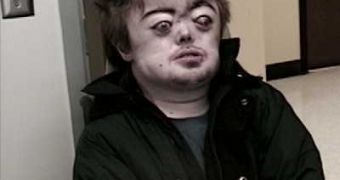Sperm competition can go really wild, and sometimes, the race for fertilizing an egg goes beyond natural selection. This seems to explain the higher than normal rate of a mutation that stops skull growth and induces joined fingers and toes, as the same mutation also spurs the division rhythm of the cells that form sperms.
One in every 70,000 children is born with the Apert syndrome, translated into fused bones in the head, hands and feet. It may seem low, but this incidence is 100-1000 times bigger than the average value for life-threatening mutations. The DNA change occurs on a sole gene on chromosome 10 and is connected to the father's age.
First, scientists believed that the high incidence is due to a higher susceptibility of the site to DNA changes, a mutation "hotspot." But a new research showed that this was connected to the advantage conferred by the mutation to germline cells of the sperms in the war of the sexes. More sperm means that the male is more likely to be the father of the offspring.
Computational biologist Peter Calabrese of the University of Southern California (USC) in Los Angeles made mathematical simulations for the mutation's behavior in both possible cases.
In the case of a real hotspot model, the mutant cells would evenly spread throughout the testes, while in the other case, mutants would be gathered in clusters, with almost no mutated cells in between.
A team led by USC molecular geneticist Norman Arnheim checked the theoretical models in two deceased organ donors in their 50s and 60s (at this age, men are 10 times more likely to carry and transmit the mutation compared with those under 30).
Mutants resulted, just like in the case of the sperm competition model. The mutation improves division in mutant germline cells and the accumulation of mutated sperms explains the higher incidence of Apert syndrome than expected and increased likelihood with the father's aging.
"You can have a mutation that causes a serious, detrimental condition and yet the mutation has a selective advantage." said Arnheim.
"The findings offer the first answer to the century-old puzzle of genetic conditions linked to older fathers, like Apert syndrome and achondroplasia dwarfism," said James Crow, a geneticist at the University of Wisconsin, Madison.

 14 DAY TRIAL //
14 DAY TRIAL //